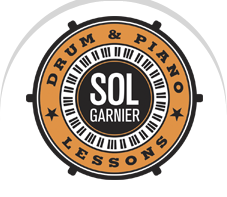This one is both serious and funny.
In the family of instruments you get the percussion, the woodwind, the singers, the strings and the piano (more on that one later).
Among all of these you get two categories: the one that breathe and the ones that do not.
A trumpet player cannot sustain an infinite note, there is a moment, right before he turns purple and collapses, he will have to inhale. Same for singers. They share the same dependency upon the constraints of the human lungs. Now, of course, I know that some virtuosos are able to develop a technic making them capable of holding a note for a really long time, as they can breathe as they blow into their horns. But those are few and far between and most, if not all, of music is written with breathing in mind.

Here’s a question: what about those instruments where you do not need to breathe? There are aplenty. Guitars and basses fall into that category. So do all the keyboard. You can dwindle on a string or four all night long, if you want, until your finger gets tired. And, yes, percussion too are non-breathing instruments, for the most part. I say that percussion gizmos do not need to breathe but let’s remember that when you have an instrument that doesn’t fit into string, singing or wind instrument, they go into the percussion basket. You bang a pot, that’s an obvious percussion one, you blow a whistle, that’s a less obvious one, and with that last one, we’re back to the limits of a human lung. Still, for the sake of this blog, we’ll say that the percussion dudes do not need to breathe.
But do they?
If you ever come across piano music, you’ll see the notes, the rhythm the different staves, but, chances are you’ll also notice those long arches that fly right above the melody or right under the bass. Those, my dear friend, are the legato marking. And, yes, you guessed it, they relate to breathing. You also get them in string instrument and percussion instruments. That is because the music made with them is composed for human ears, an animal that needs oxygen as much as a smoker needs cigarettes.
When I see a student play something on the piano (which we will consider not a percussion instrument, but a string instrument, like a luth), I make them aware of these arches. It is what helps them relate to the audience. Should they chose to ignore them and they will sound mechanical, like typewriting the music sheet instead of playing music.
As for breathing in percussion, I’ll talk about it in part 2. See you soon.
